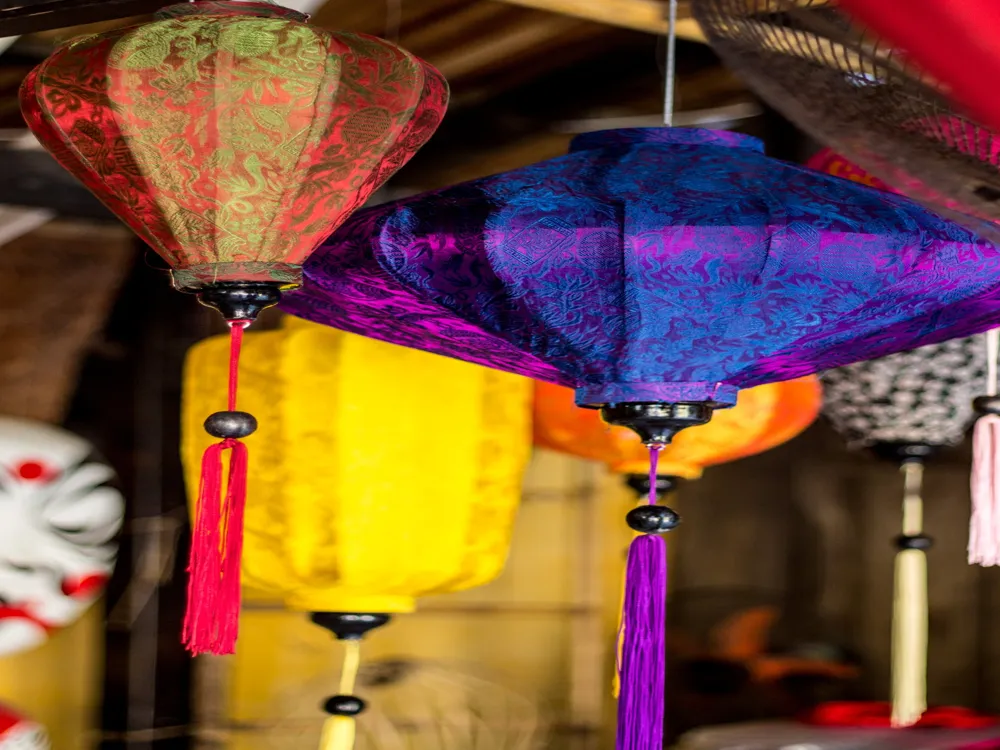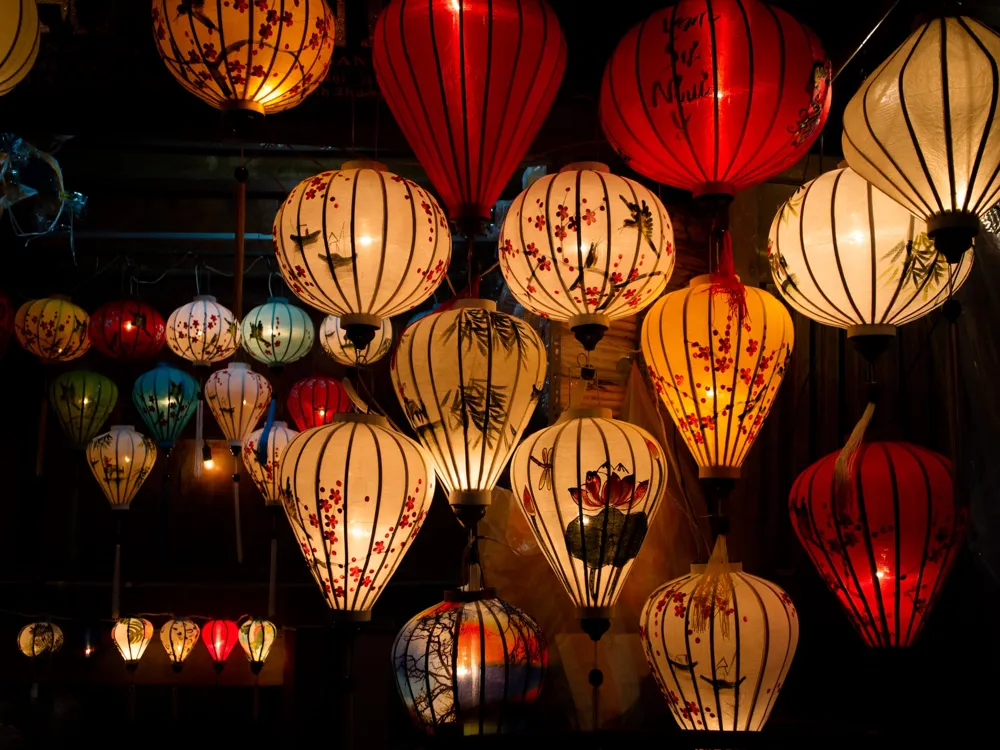The Museum of Trade Ceramics is a unique cultural gem located in the heart of Hoi An, a historic town in Vietnam known for its well-preserved Ancient Town. This museum stands as a testament to the rich history of trade and cultural exchange in Southeast Asia. It's housed in a beautifully restored 19th-century Vietnamese trading house, offering a deep dive into the fascinating world of ceramics and their role in international trade. Visitors to the museum can explore a vast collection of artifacts, including antique ceramic pieces that date back to the 8th century. These treasures come from various parts of Asia and the Middle East, demonstrating Hoi An's significance as a major trading port. The Museum of Trade Ceramics isn't just about pottery; it's a gateway to understanding the cultural and historical ties between Vietnam and other civilizations. Through its exhibits, the museum showcases the exchange of goods, ideas, and artistry that occurred along the ancient maritime Silk Road. One of the highlights of the museum is its array of Chinese ceramics, a testament to the strong trade links between China and Hoi An. Also, noteworthy are the collections from Japan, India, and Persia, each telling a different story of cross-cultural interactions. The museum doesn't just display artifacts; it brings them to life with detailed explanations about their origin, function, and journey to Hoi An. Besides the stunning collection of ceramics, the Museum of Trade Ceramics offers a glimpse into the architectural heritage of Hoi An. The building itself is a piece of history, showcasing traditional Vietnamese design elements alongside influences from Chinese and Japanese architecture. This blend of styles reflects the multicultural nature of Hoi An as a trading hub. The Museum of Trade Ceramics is more than just a museum; it's an educational journey that offers insights into the rich tapestry of Asian trade history. It's a must-visit for history buffs, art lovers, and anyone interested in the ancient routes that connected different corners of the world. The architecture of the Museum of Trade Ceramics in Hoi An is a remarkable representation of the cultural melting pot that was ancient Vietnam's trading community. The structure, a two-story building, reflects a harmonious blend of Vietnamese, Chinese, and Japanese architectural styles, a direct result of the diverse influences brought by traders over the centuries. The museum's façade is a classic example of traditional Vietnamese architecture. It features a tiled roof with curved edges, reminiscent of the ancient temples and houses in Hoi An. The tiles, made from locally sourced clay, are a deep terracotta color, which contrasts beautifully with the white walls of the building. Inside, the influence of Chinese and Japanese design is more pronounced. Intricately carved wooden panels and beams are a highlight, showcasing the exquisite craftsmanship of the period. These carvings often depict scenes from local folklore and mythology, offering insight into the cultural beliefs of the time. The use of dark wood in contrast with the light walls creates a warm, inviting atmosphere. One of the most striking features of the museum is its courtyard. Designed in the style of a traditional Chinese garden, it provides a tranquil space where visitors can reflect on the exhibits. The garden includes a small pond, rock formations, and a variety of local plants, creating a serene environment that complements the historical ambiance of the museum. The layout of the Museum of Trade Ceramics is also significant. The rooms are arranged according to the origin of the artifacts, with separate areas for Chinese, Japanese, Indian, and Middle Eastern ceramics. This not only makes for an organized viewing experience but also symbolizes the cultural segregation that existed in the trading community of ancient Hoi An. Overall, the architecture of the Museum of Trade Ceramics is a physical embodiment of the cultural diversity and historical significance of Hoi An. It's a remarkable structure that not only houses historical treasures but is itself a piece of history, offering a tangible connection to the past. - Check the museum's opening hours and try to arrive early to avoid crowds. - Allow at least 1-2 hours for your visit to fully appreciate the exhibits. - Consider visiting during weekdays for a quieter experience. - Take time to read the informational plaques and descriptions for a better understanding of the artifacts. - Look out for special exhibitions or guided tours for deeper insights. - Remember to speak softly and turn off your mobile phone to maintain the museum's peaceful atmosphere. - Photography may be restricted in some areas; adhere to the museum's guidelines. - Opt for comfortable clothing and footwear as you will be walking a lot. - Dress modestly out of respect for the cultural setting. The Museum of Trade Ceramics is located in the Ancient Town of Hoi An, making it easily accessible by various modes of transport. For those staying in Hoi An, the museum is within walking distance from most parts of the town. Bicycles are a popular and eco-friendly way to get around, and many hotels and guesthouses offer bike rentals. For visitors coming from outside Hoi An, the nearest airport is Da Nang International Airport, about 30 km away. From there, you can take a taxi, a shuttle bus, or arrange a private transfer to Hoi An. Once in the town, you can explore the area on foot or by bike to reach the museum. Additionally, there are public buses and taxis available for those who prefer not to walk or cycle. It's recommended to check the local transportation schedules and plan your route for a hassle-free visit. Read More:Overview of the Museum of Trade Ceramics in Hoi An
Architecture of the Museum of Trade Ceramics
Tips When Visiting the Museum of Trade Ceramics
Plan Your Visit
Understanding the Exhibits
Respectful Behavior
Dress Appropriately
How To Reach the Museum of Trade Ceramics
Museum of Trade Ceramics
Hoi An
₹ 15,200 onwards
View hoi-an Packages
Weather :
Tags : Museum
Timings : Daily - 8 AM to 6 PM
Planning a Trip? Ask Your Question
Hoi-an Travel Packages
View All Packages For Hoi-an
Top Hotel Collections for Hoi-an

Private Pool

Luxury Hotels

5-Star Hotels

Pet Friendly
Top Hotels Near Hoi-an
Other Top Ranking Places In Hoi-an
View All Places To Visit In hoi-an
View hoi-an Packages
Weather :
Tags : Museum
Timings : Daily - 8 AM to 6 PM
Planning a Trip? Ask Your Question
Hoi-an Travel Packages
View All Packages For Hoi-an
Top Hotel Collections for Hoi-an

Private Pool

Luxury Hotels

5-Star Hotels

Pet Friendly






















